50+ Sample Sick Leave Documents
-
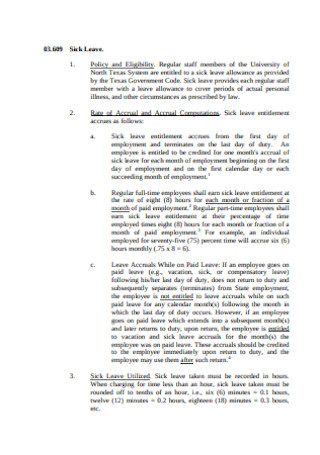
Sick Leave Policy
download now -
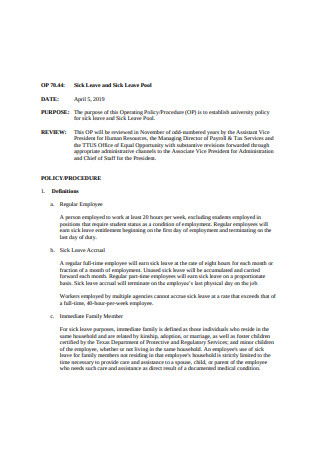
Sick Leave Sample
download now -
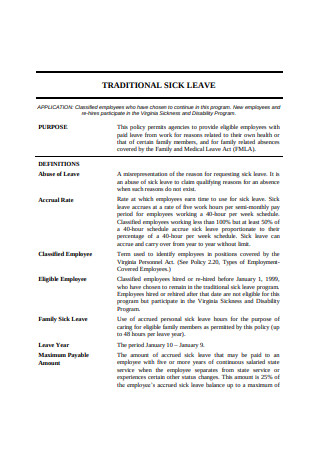
Traditional Sick Leave
download now -
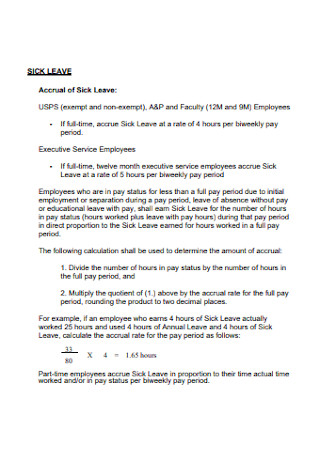
Sick Leave Example
download now -
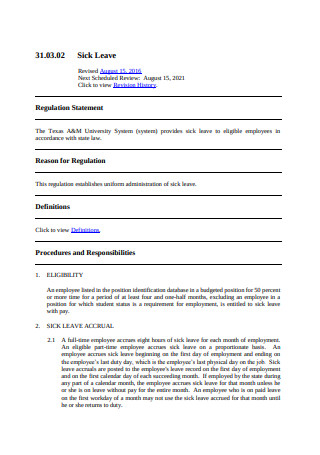
Sample Sick Leave
download now -
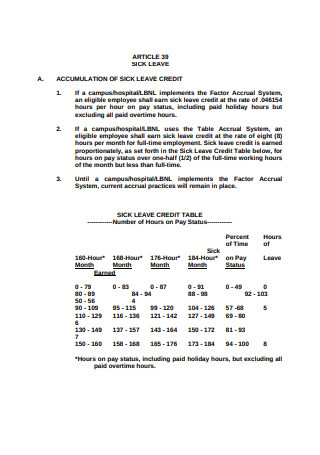
Accumulation of Sick Leave Credit
download now -
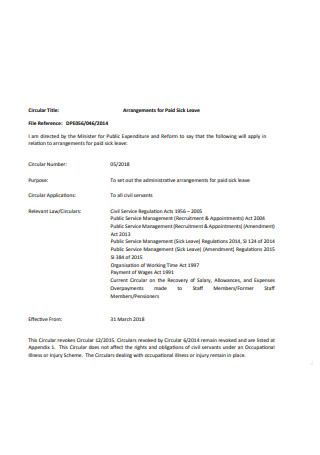
Arrangements for Paid Sick Leave
download now -
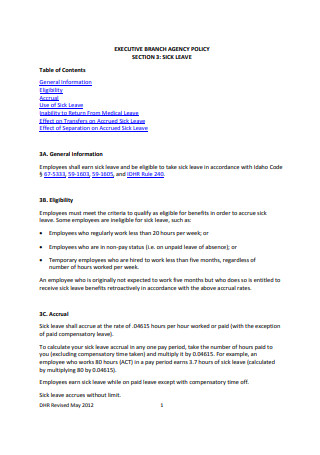
Sick Leave Policy Sample
download now -
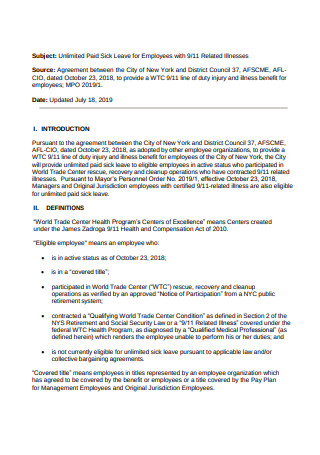
Paid Sick Leave for Employees
download now -

Sick Leave Pool Policy
download now -
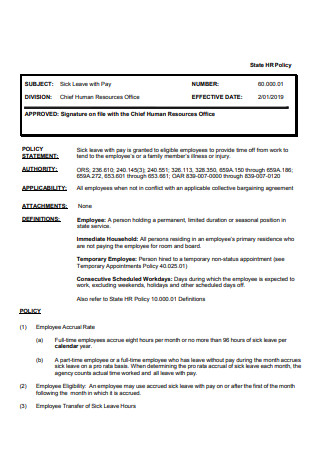
Sick Leave with Pay Format
download now -
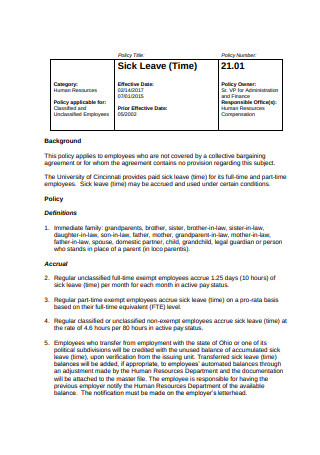
Sick Leave Policy Format
download now -
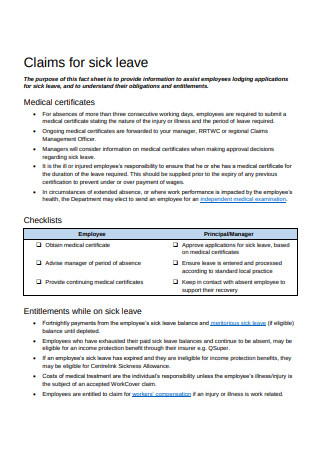
Claims for sick leave
download now -
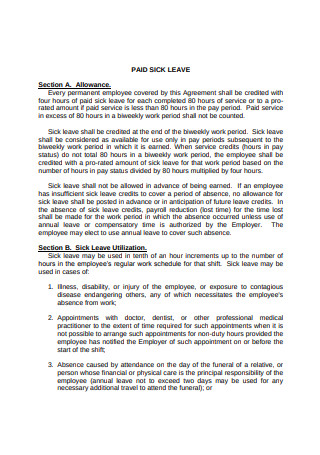
Paid Sick Leave Sample
download now -
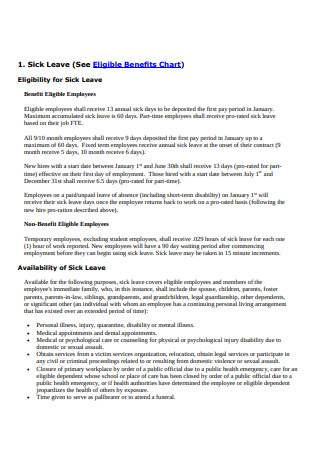
Basic Sick Leave
download now -
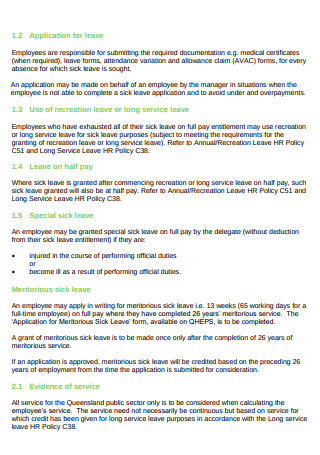
Sample Sick Leave Policy
download now -
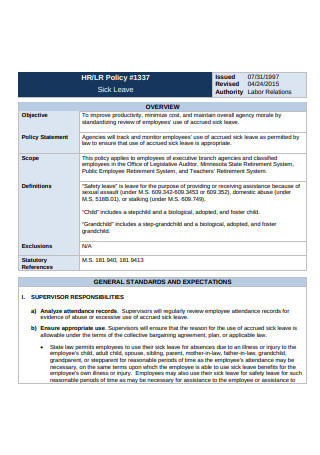
Hr Sick Leave Policy
download now -
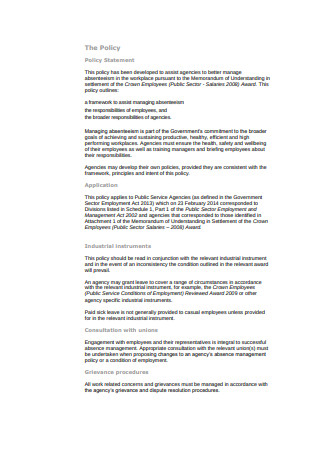
Sick Leave Policy Example
download now -
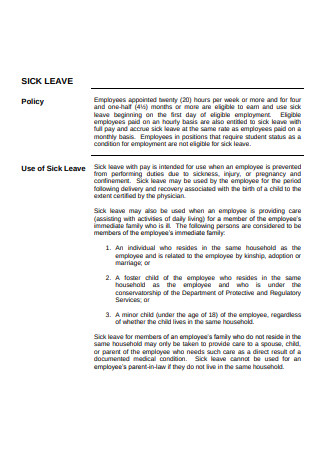
Simple Sick Leave Policy
download now -
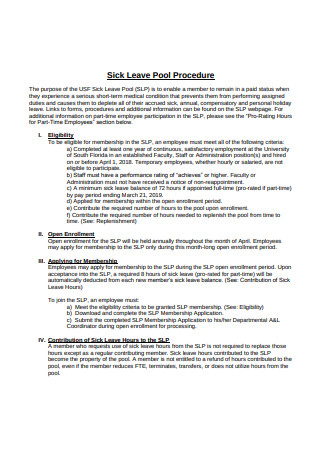
Sick Leave Pool Procedure
download now -
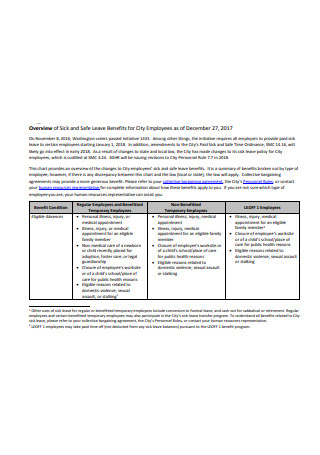
Sick and Safe Leave Benefits
download now -
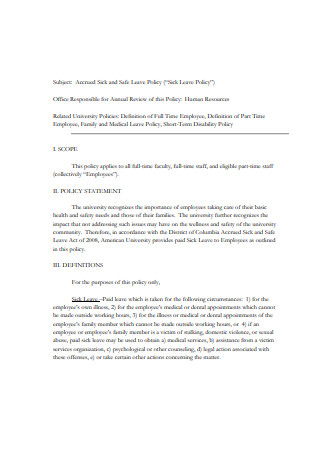
Accrued Sick and Safe Leave Policy
download now -

Sick Leave Format
download now -
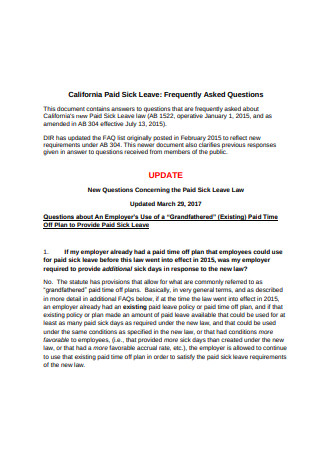
Paid Sick Leave
download now -
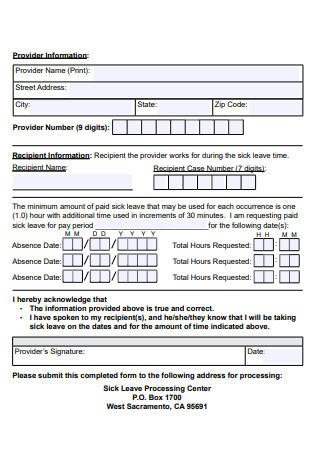
Paid Sick Leave Request Form
download now -
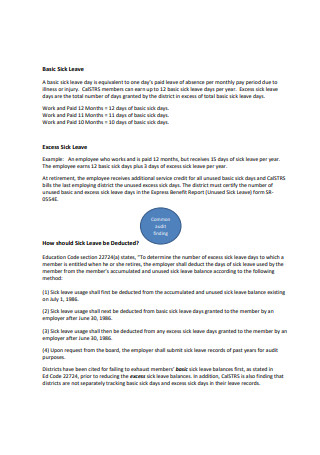
Basic Sick Leave Format
download now -
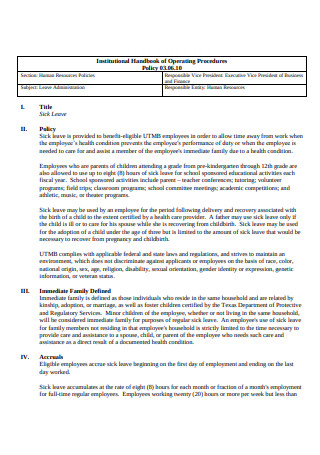
Simple Sick Leave Policy Example
download now -
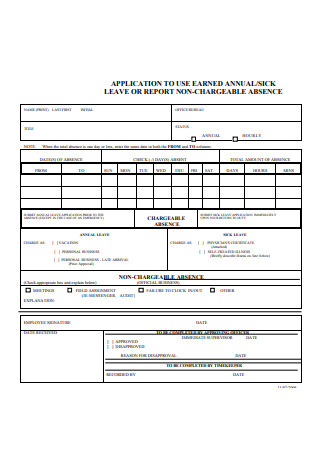
Sick Leave Application Format
download now -
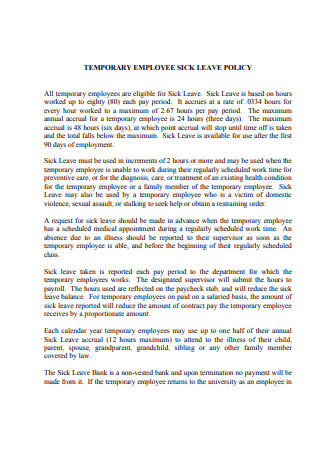
Employee Sick Leave Policy
download now -
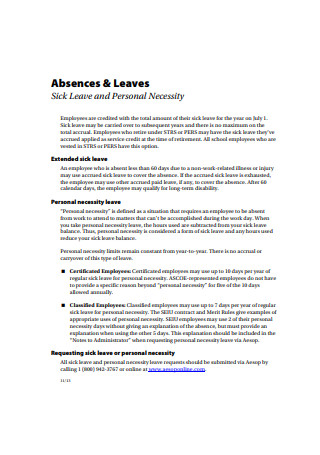
Formal Sick Leave
download now -
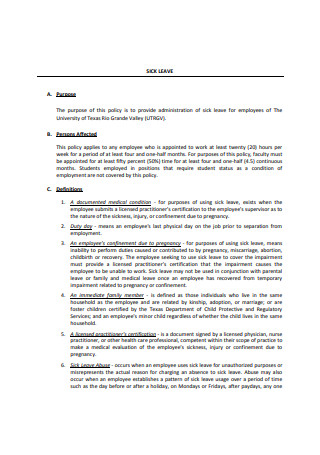
Standard Sick Leave Policy
download now -
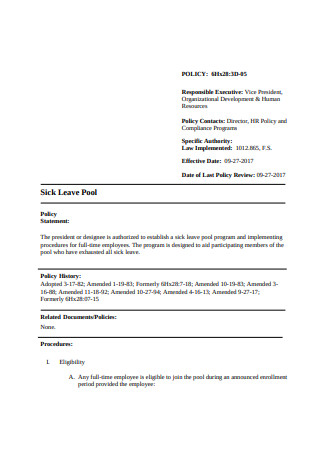
Sick Leave Pool Policy Format
download now -
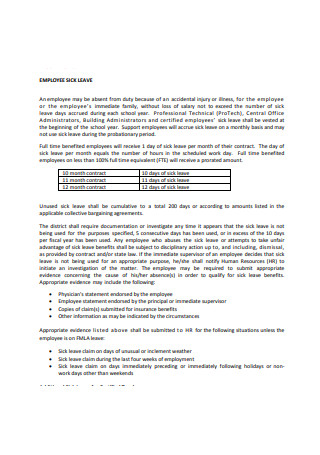
Employee Sick Leave Format
download now -

Basic Sick Leave Example
download now -

Basic Sick Leave Sample
download now -
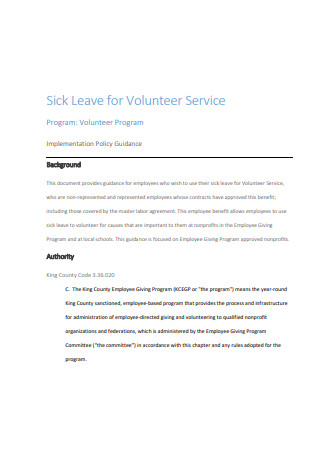
Sick Leave for Volunteer Service
download now -
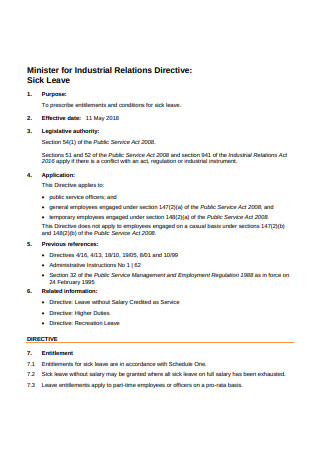
Printable Sick Leave
download now -
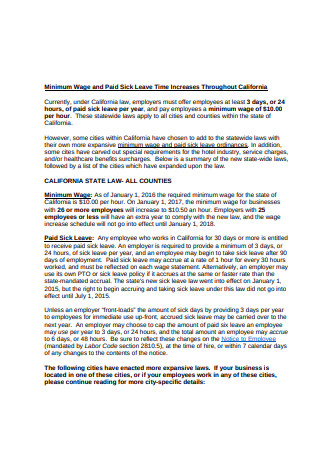
Paid Sick Leave Example
download now -
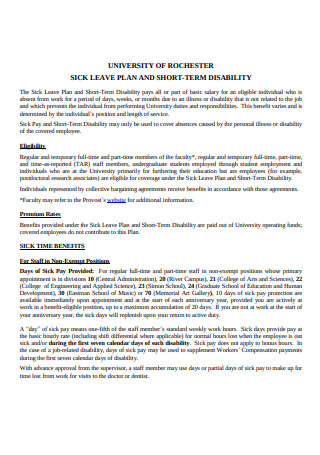
Sick Leave Plan
download now -
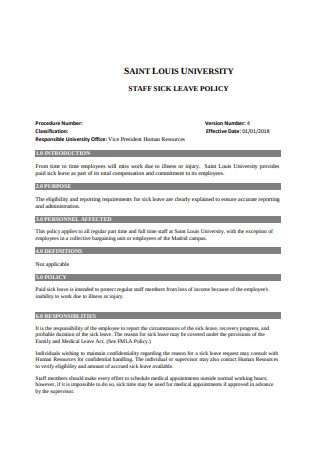
Staff Sick Leave Policy
download now -
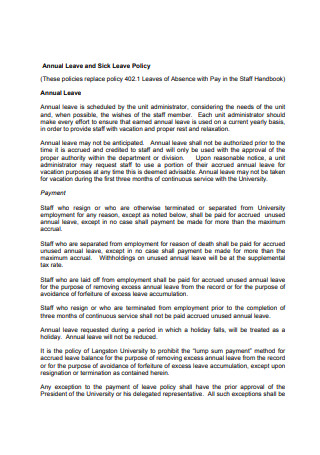
Annual Sick Leave Policy
download now -

Standard Sick Leave Policy Example
download now -
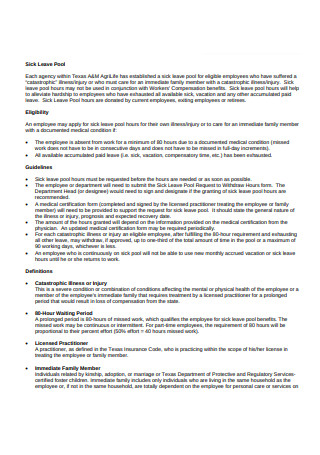
Sick Leave Pool
download now -
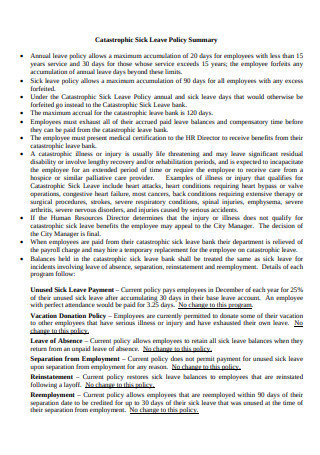
Sick Leave Policy Summary
download now -
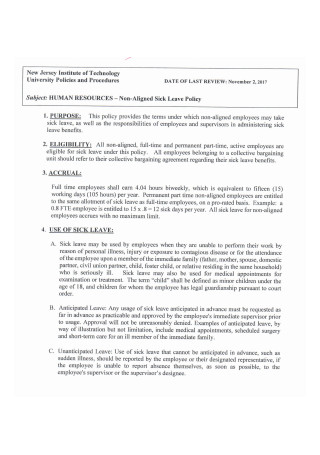
Non-Aligned Sick Leave policy
download now -
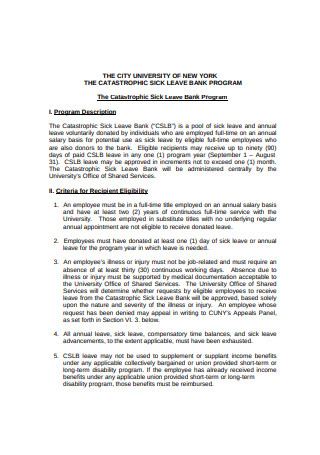
Sick Leave Bank Program
download now -
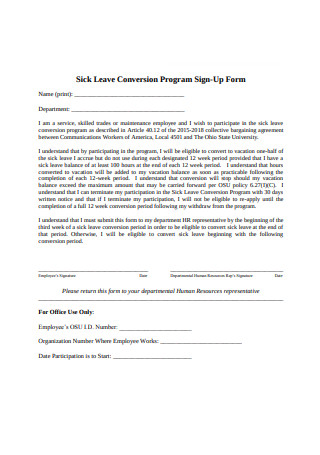
Sick Leave Conversion Program Sign-Up Form
download now -
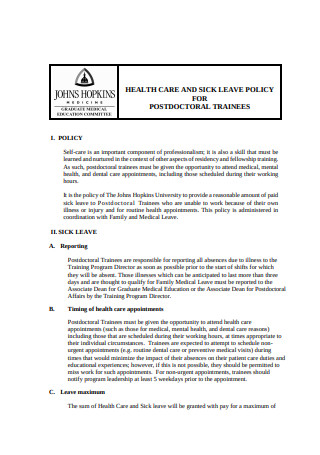
Health Care and Sick Leave Policy
download now -
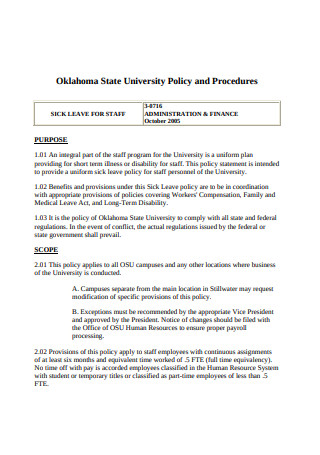
Staff Sick Leave Policy Format
download now -
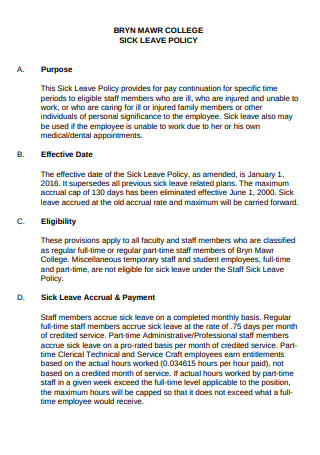
College Sick Leave Policy
download now -
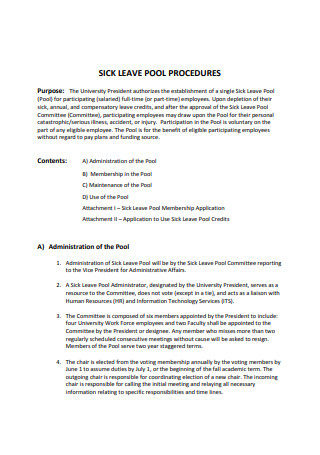
Sick Leave Pool Procedure Format
download now -
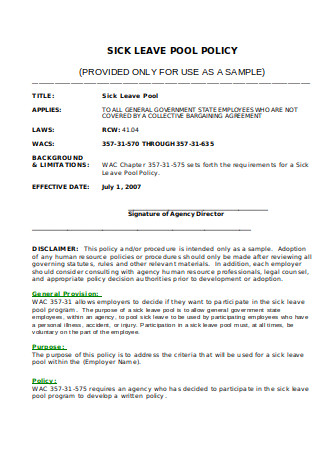
Sample Sick Leave Pool Policy
download now
FREE Sick Leave Documents s to Download
50+ Sample Sick Leave Documents
What Is a Sick Leave
Benefits of a Sick Leave
How to Make a Sick Leave Form
Dos and Don’t of Making a Sick Leave Form
What Is a Sick Leave
Sick leave is a benefit provided by the company, packaged together with the compensation and benefits package. Its main use is when an employee is sick with an illness that may be contagious and may infect other people within the organization. You can also use this to have time off and recuperate from an illness that slows down the effectivity of the employee. The use of sick leave can also be extended to caring for a sick immediate family member, which refers to a spouse, domestic partner, parents, and siblings. The spouses and domestic partners include same-sex partners.
The Family and Medical Leave Act (FMLA) mandates sick leave eligibility. An employee should be employed in a company with more than fifty employees for twelve months or more to be eligible for a twelve-week unpaid leave. This long span of unpaid absence can also be used for other reasons such as for giving birth or adopting a child. It can also be used to care for a family member suffering from a chronic illness, although it is only valid if the sick person is no longer capable of taking care of themselves.
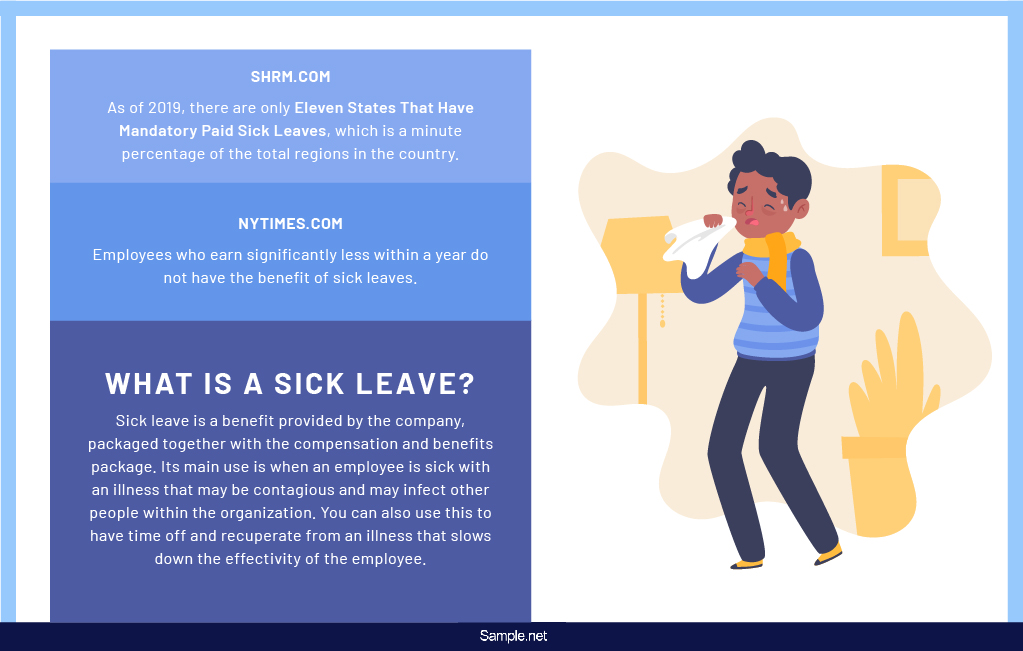
Benefits of a Sick Leave
Working a stable, 8-5 job has its perks. It provides a steady flow of income every month. And it provides a comfortable way of living for some. The thought of taking some days off to heal and recuperate is difficult for other people to grasp. Aside from recovery from illnesses, having days off away from work has several benefits.
How to Make a Sick Leave Form
From several developed countries, the U.S. is one of the countries that do not have a law that mandates all the companies to give a paid sick leave benefit to their employees. As of 2019, there are only eleven states that have mandatory paid sick leaves, which is a minute percentage of the total regions in the country.
Step 1: Determine Leave Credits
Under the FMLA, companies with over fifty employees should provide unpaid sick leave for three days or more. Some companies have specific policies that regulate the number of leaves an employee takes within a year. Most often, these leaves differ according to the length of service of the employee to the company and their position. On the other hand, other companies offer the same number of leave credits to everyone. Some companies also allow the remaining leave credits roll over to the next year’s batch of credits resulting in its accrual. Based on your corporate strategies, before you file for your sick leave, make sure that you know how many credits you have left. This increases the chance of your leave’s approval, especially when the need is to care for a close member of the family. You also need to know if the remaining credits suffice the time you need to care for yourself or another.
Step 2: Fill Up Application Form
Most companies also have sick leave application forms that require necessary details such as the name, position, and reason for the leave. Filling up this form is straightforward. Do take note that for purposes aside from personal sickness, the request should be filed ahead. Last-minute absences due to fever or flu mean a form should be given upon the return of the employee. The company may also have policies that require the employee to present supporting documents to legitimize the absence. These forms are formulated and regulated by the human resources department. One important thing to take note is the signatories. More often than not, the direct supervisor and HR specialist need to affix their signature on the form.
Step 3: Draft a Formal Letter
Pair your application with a request form and a professionally-written sick leave letter. You can print and submit the letter personally or send it through email. It may contain similar information with the leave form, but it imprints a more personal touch. With the letter, you can also expound the reason for the leave. This is especially helpful when you use the leave for other purposes, such as taking care of someone who has a serious illness. You can explain the importance of your presence during this state for them. Formal letters can also serve as excuse letter in other fields such as in the academe. Students are required to present these letters and supporting documents after taking days off from school.
Step 4: Secure Supporting Documents
Supporting documents such as medical certificates, hospital bills, and prescriptions are essential to legitimize the employee’s claim of absence. There have been cases of employees who take advantage of sick leaves by using it for other reasons, other than sicknesses, birth, or adoption. And requiring these documents is one way of the organization of countering the rising abuse of the benefit. This measure is made so that the management is aware of their employee’s wellbeing while affiliated with the corporation. They can use these materials to document the common sicknesses and maybe create an intervention to lessen the incidence within the company.
Dos and Don’t of Making a Sick Leave Form
Despite the simplicity of sick leave forms, there are still several factors to take note of and guidelines to follow in coming up with the best format possible.
Dos
1. Do inform before the absence.
It is a standard operating procedure to make the necessary people aware of the absence before the exact date. This can be applied for sick leaves used for birth, scheduled medical procedures, and check-ups. On the other hand, in cases of on the day absences, make sure to inform your heads of the HR specialist hours before you need to report for duty. This is beneficial for the management so that they can take measures to cover your absence. They can choose to request someone else to cover for your shift or distribute your workload to other people. However, this depends on the nature of the business.
2. Do practice return to work interviews.
These return to work interviews are not so common as compared to entrance and exit interviews. These interviews create a personal relationship between the management and the employees by expressing interest in the personal life of the employee. Conducting these interviews can also help in figuring out if there are other reasons behind the absence of the employee. This may be additional work to do, especially if there are more than a hundred employees within the company. Still, it has a positive effect on the employees’ attitude towards the company. Similar to providing sick leaves, it can also increase their loyalty and can boost morale.
3. Do understand the situation of the employee.
The aim of the workforce today is to be inclusive. It does not discriminate. As much as possible, it accepts qualified personnel regardless of impairment, gender, and age. In such cases, there may be employees who are taking maintenance medication that can have side effects that can somehow affect their performance at work. It is best to have one on one conversations with these employees to understand their needs and cater to them. After all, they have proved that they are qualified for the job despite having special conditions. It is also a corporate responsibility to foster a conducive working environment for all employees.
Don’ts
1. Do not forget to follow-up.
If your company does have a manageable ratio between HR specialists and employees to conduct back to work interviews, you can extend the role of your line managers and supervisors to follow up on the situation of the employees after their leaves. You can ask about what happened during the break, what the experience was like, and their current conditions. Follow-ups are also helpful in figuring out if the employee is ready and fit to work again. There are still instances when they are no longer physically ill, but their mental states are not stable and rested yet. In this case, the supervisor or manager can still advise the employee to go home and rest some more.
2. Do not limit the recovery time.
Each person has varying levels of thresholds. Some may recover quickly after minor accidents and sicknesses. Others may take more time to recuperate from a simple illness such as flu because of other medical and personal complications. With this truth, it is unfair to impose a limited recovery time for all the employees. This may be unfair for some, and others may take advantage of it.
